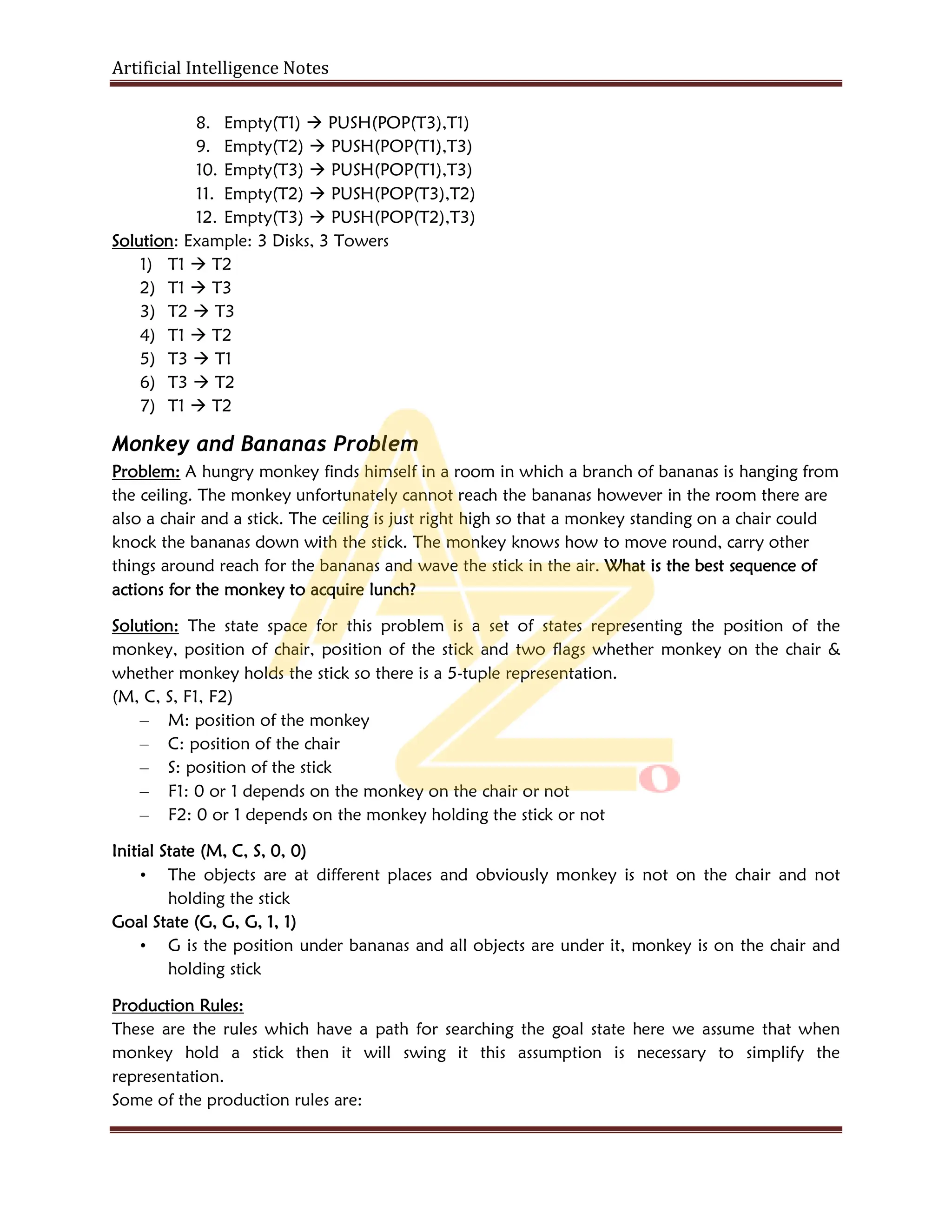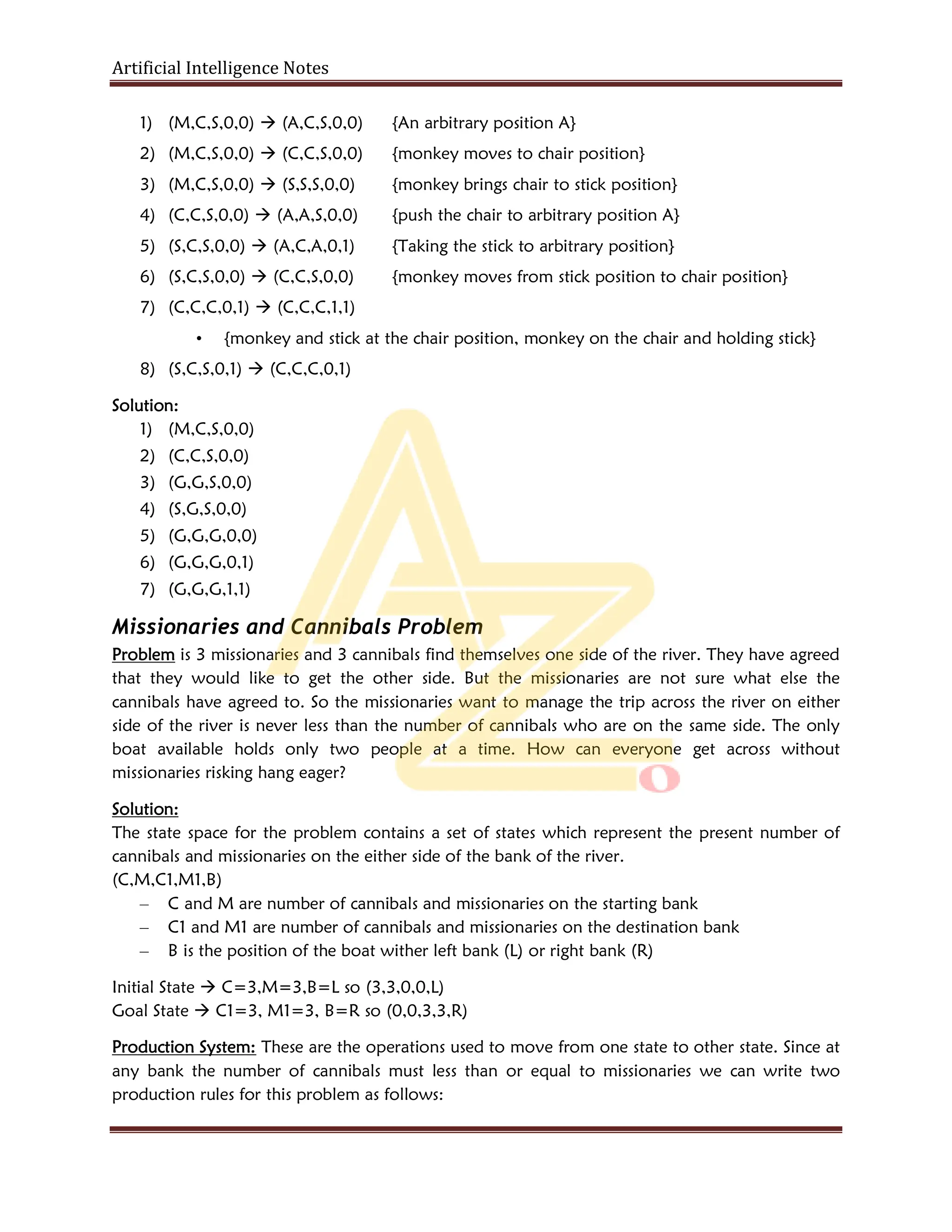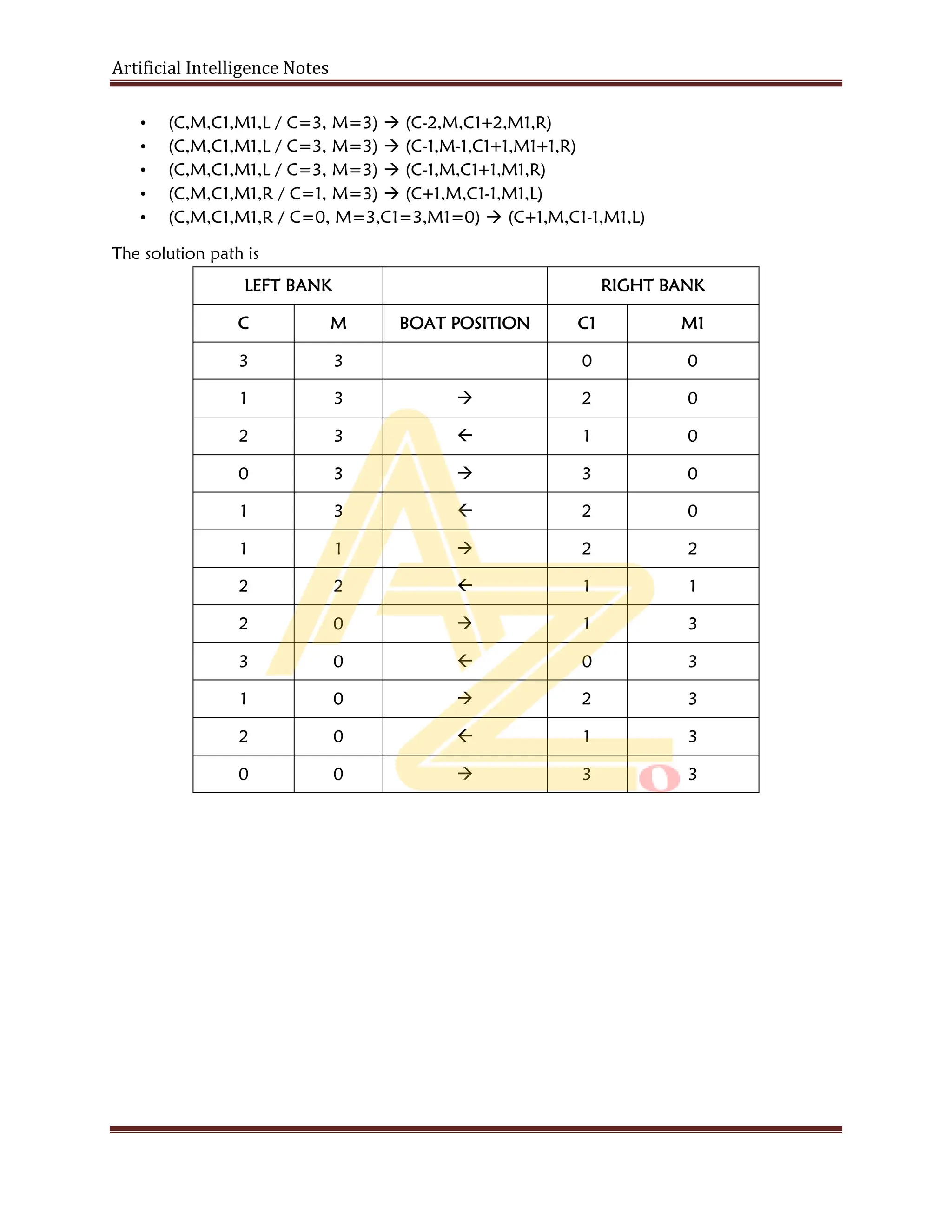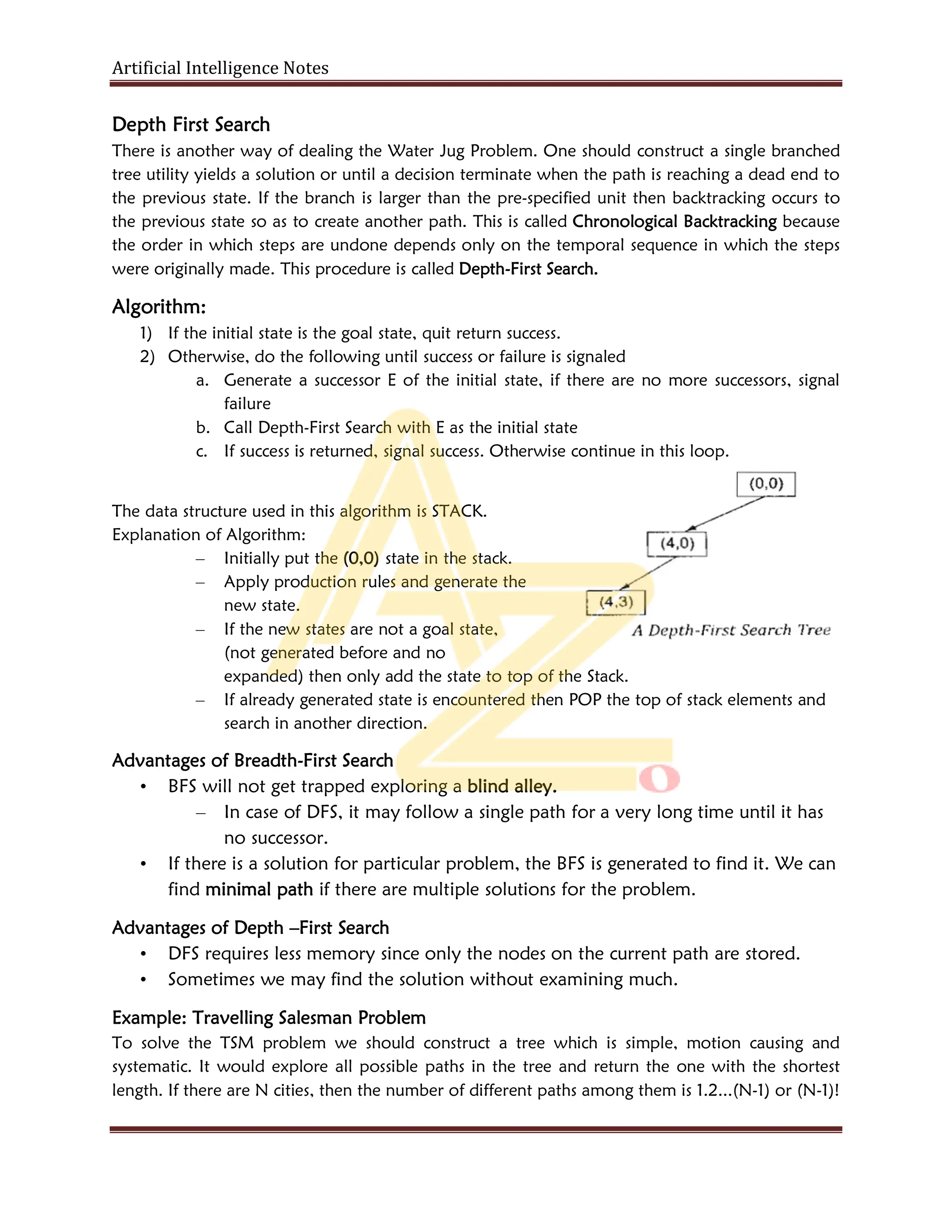The document provides an overview of artificial intelligence (AI) including definitions, techniques, and challenges. It discusses how AI aims to make computers intelligent like humans by giving them abilities such as perception, reasoning, learning, and problem solving. Some key techniques mentioned are search, knowledge representation, and abstraction. The document also discusses the Turing Test as a proposed method for determining if a machine can think like a human. It provides examples of problems AI aims to solve such as game playing, commonsense reasoning, and perception.
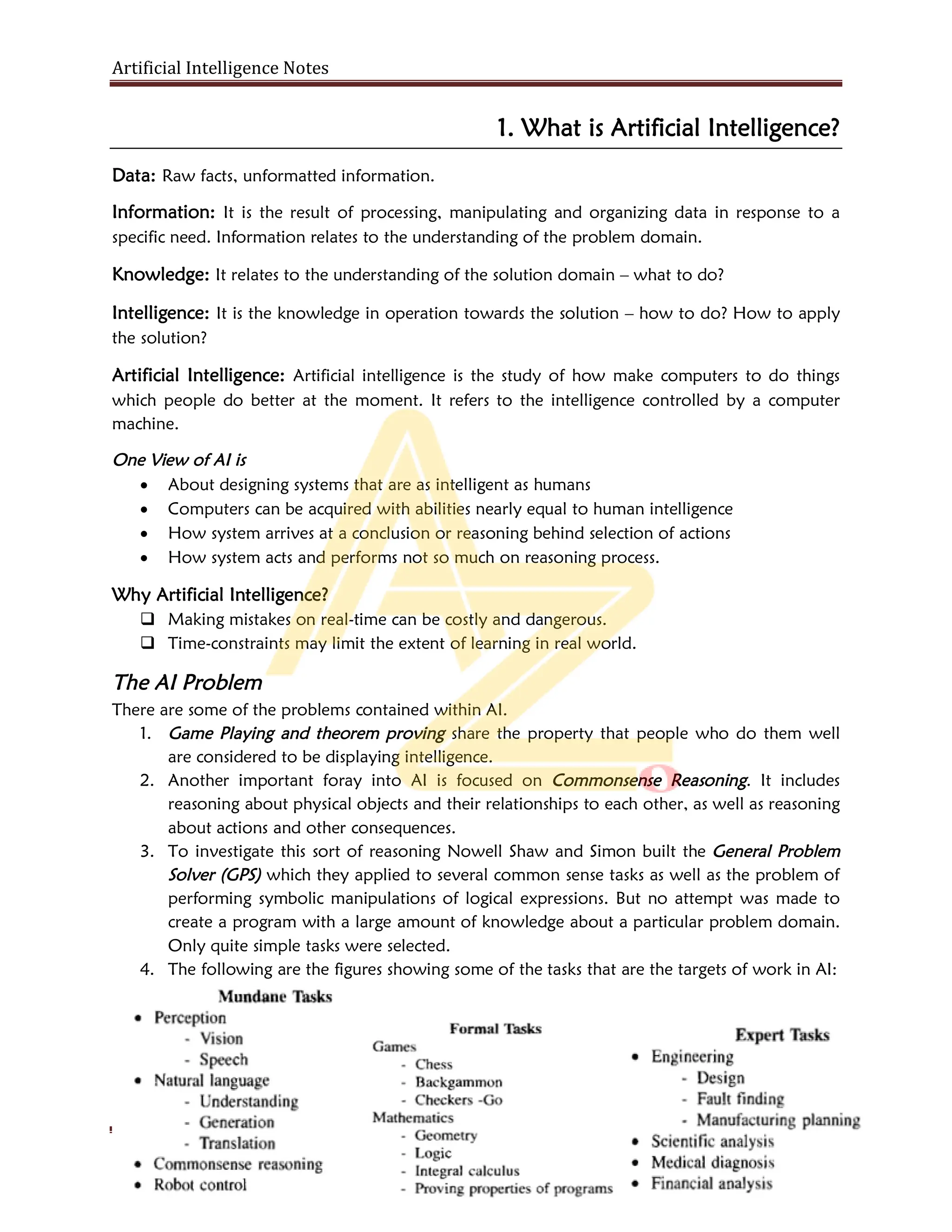
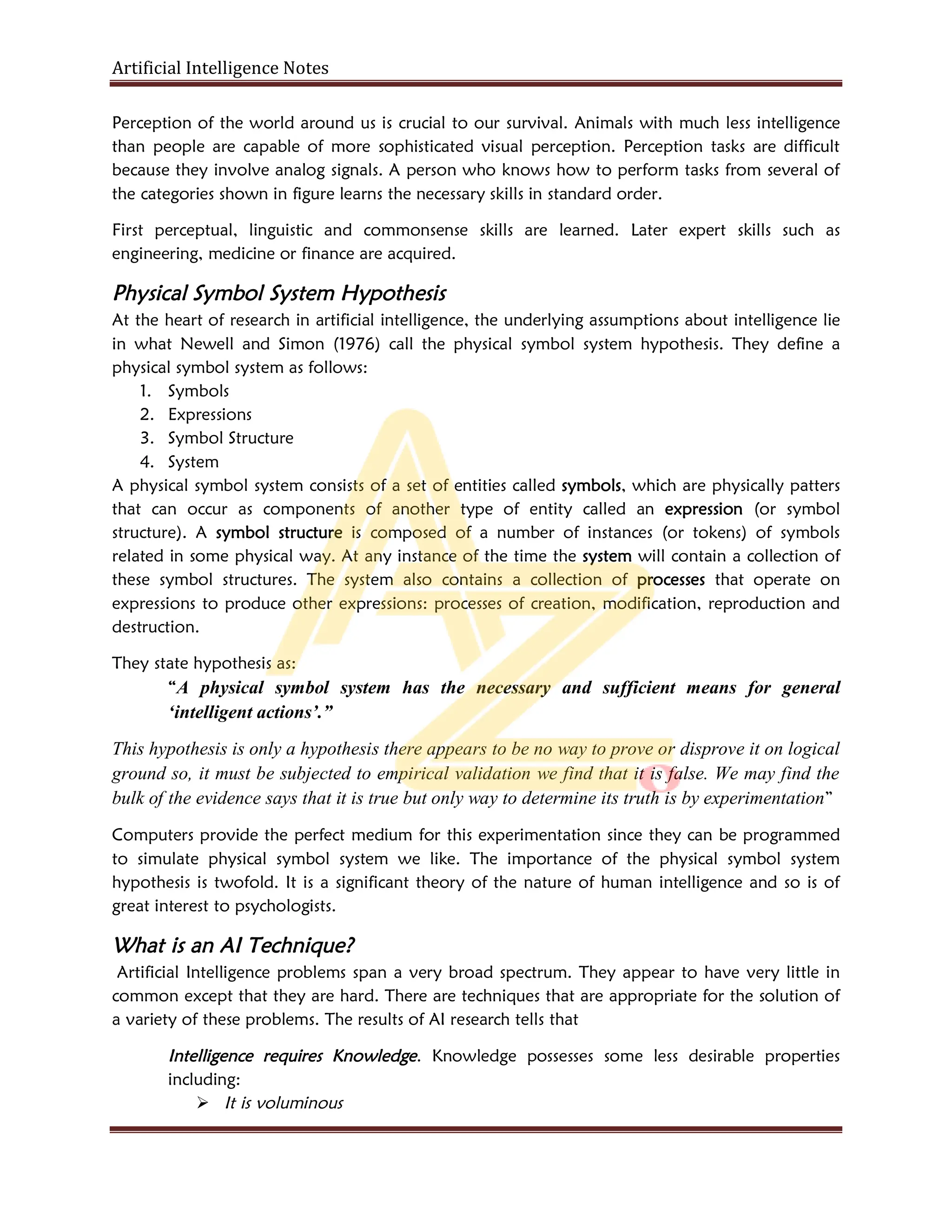
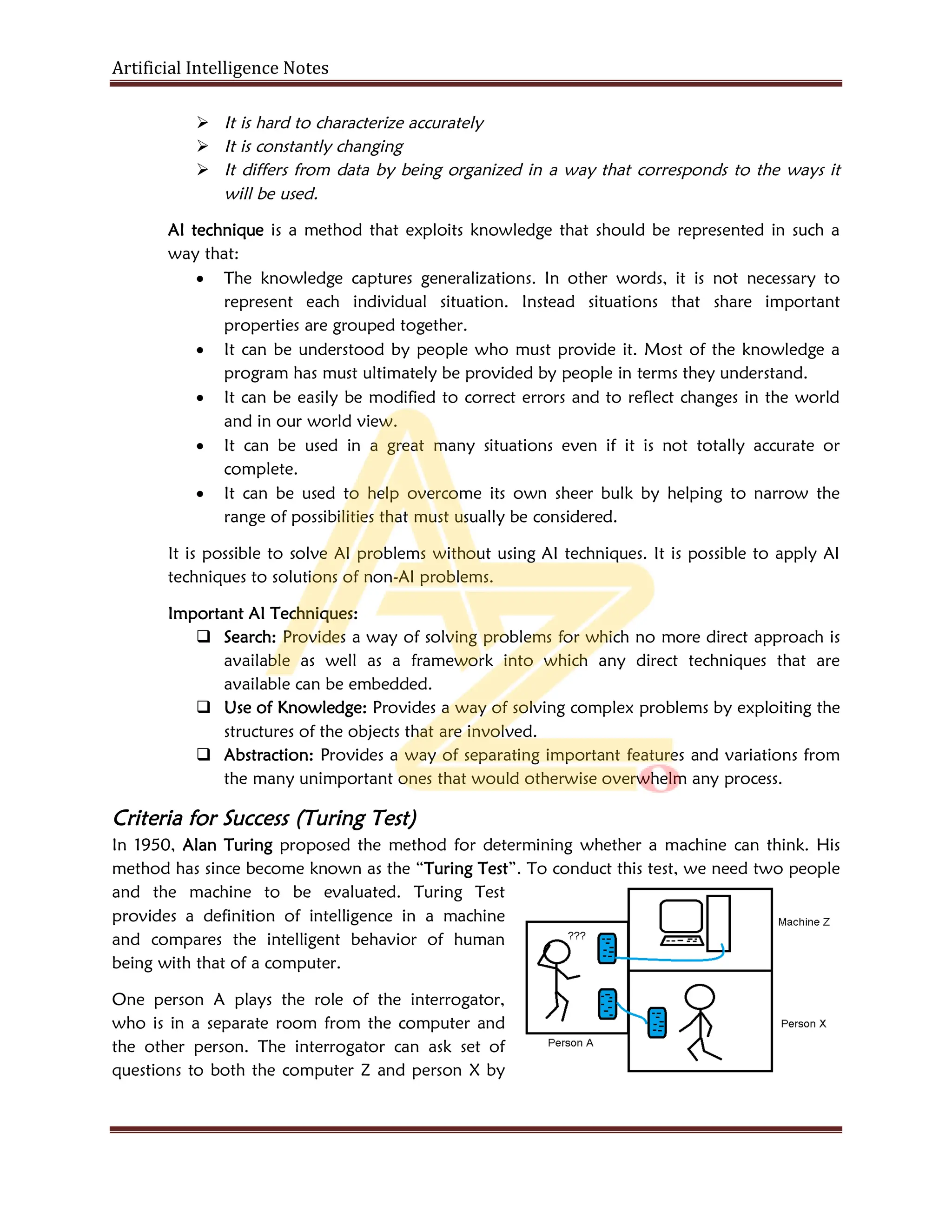

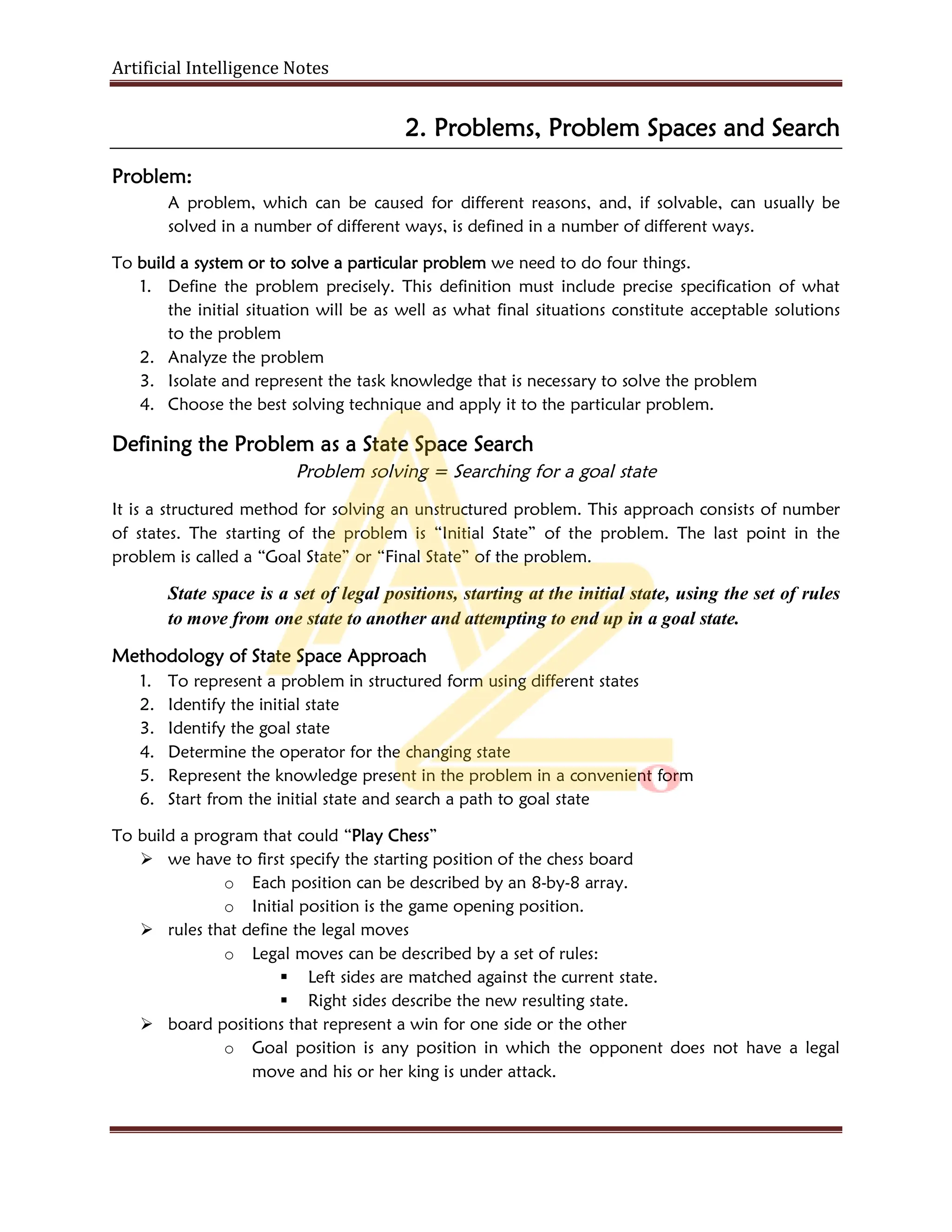


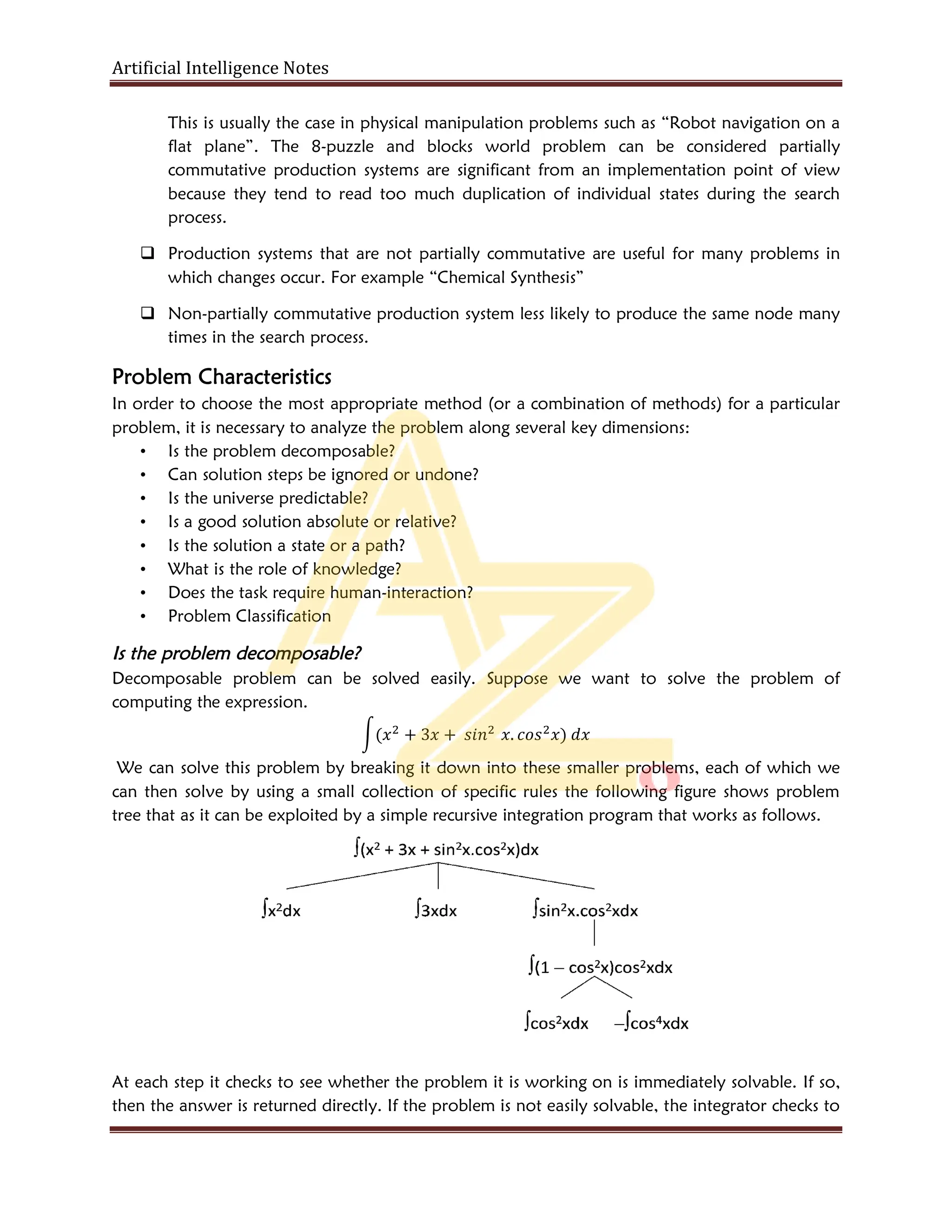

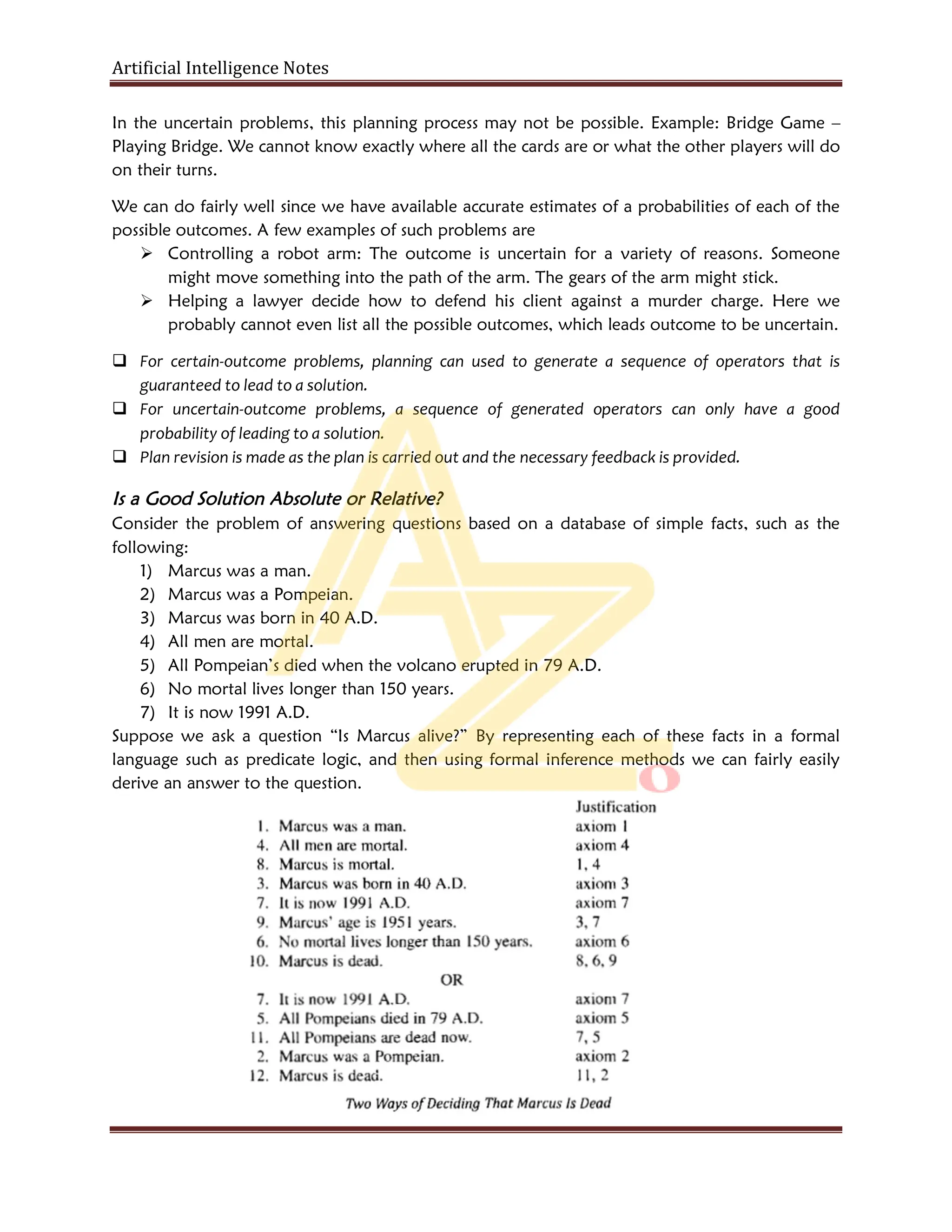
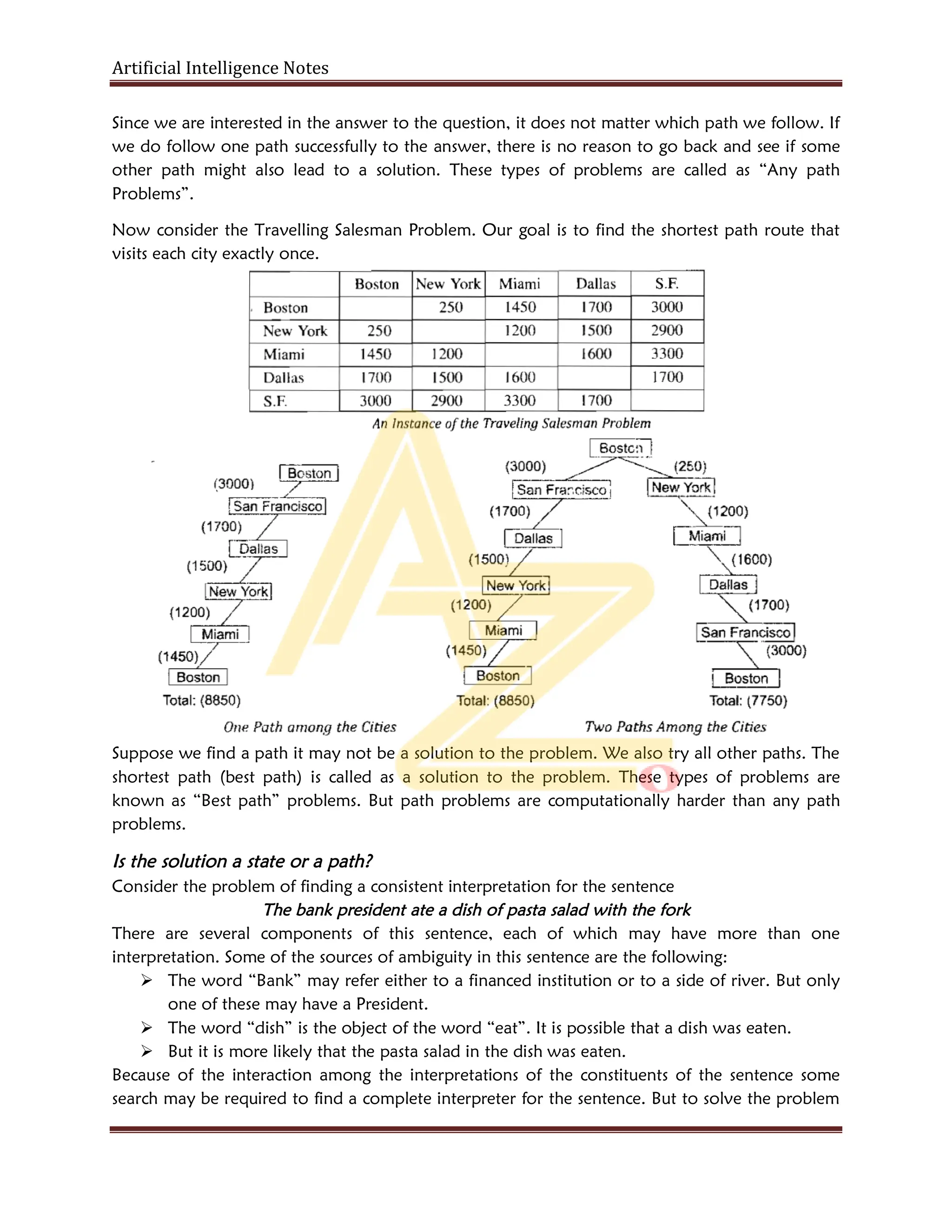
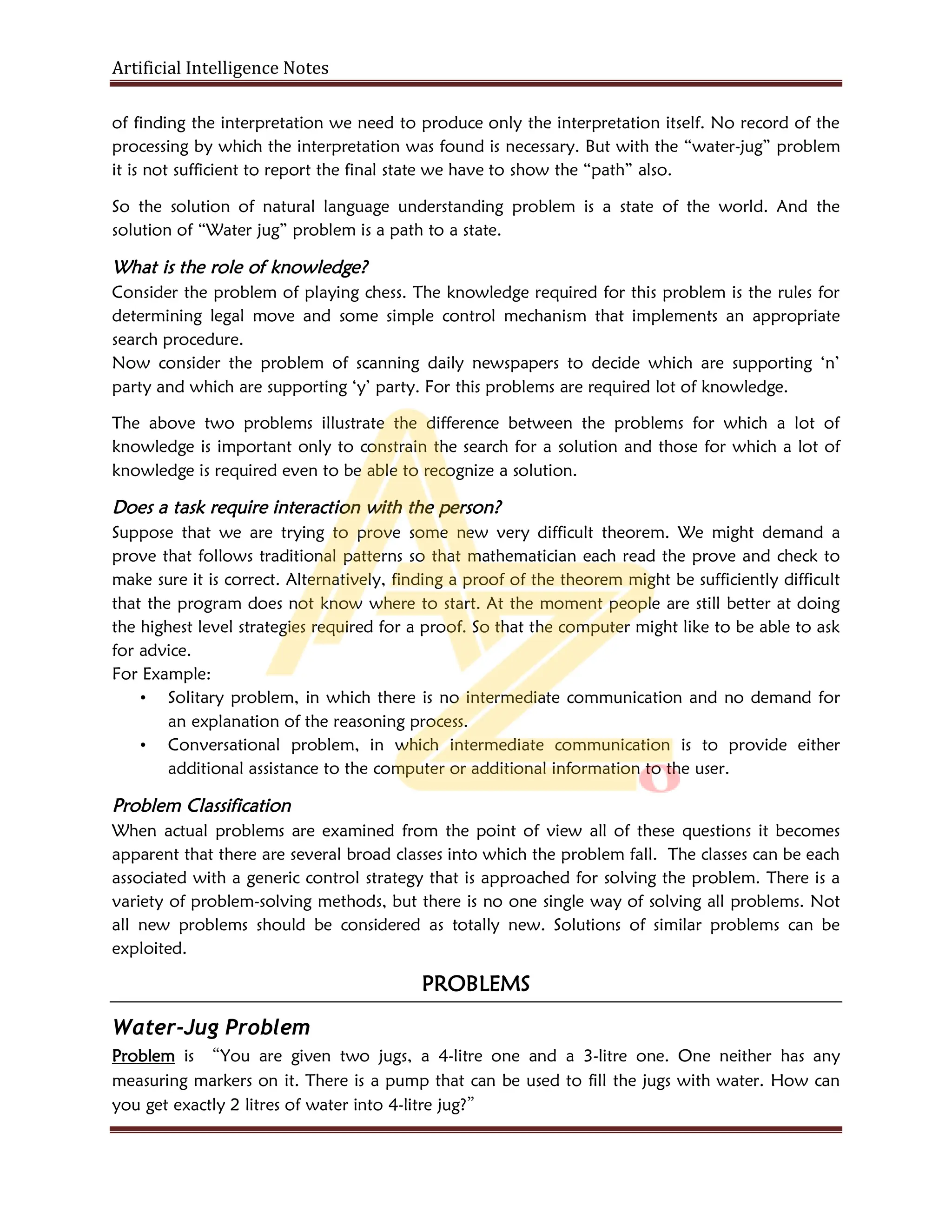
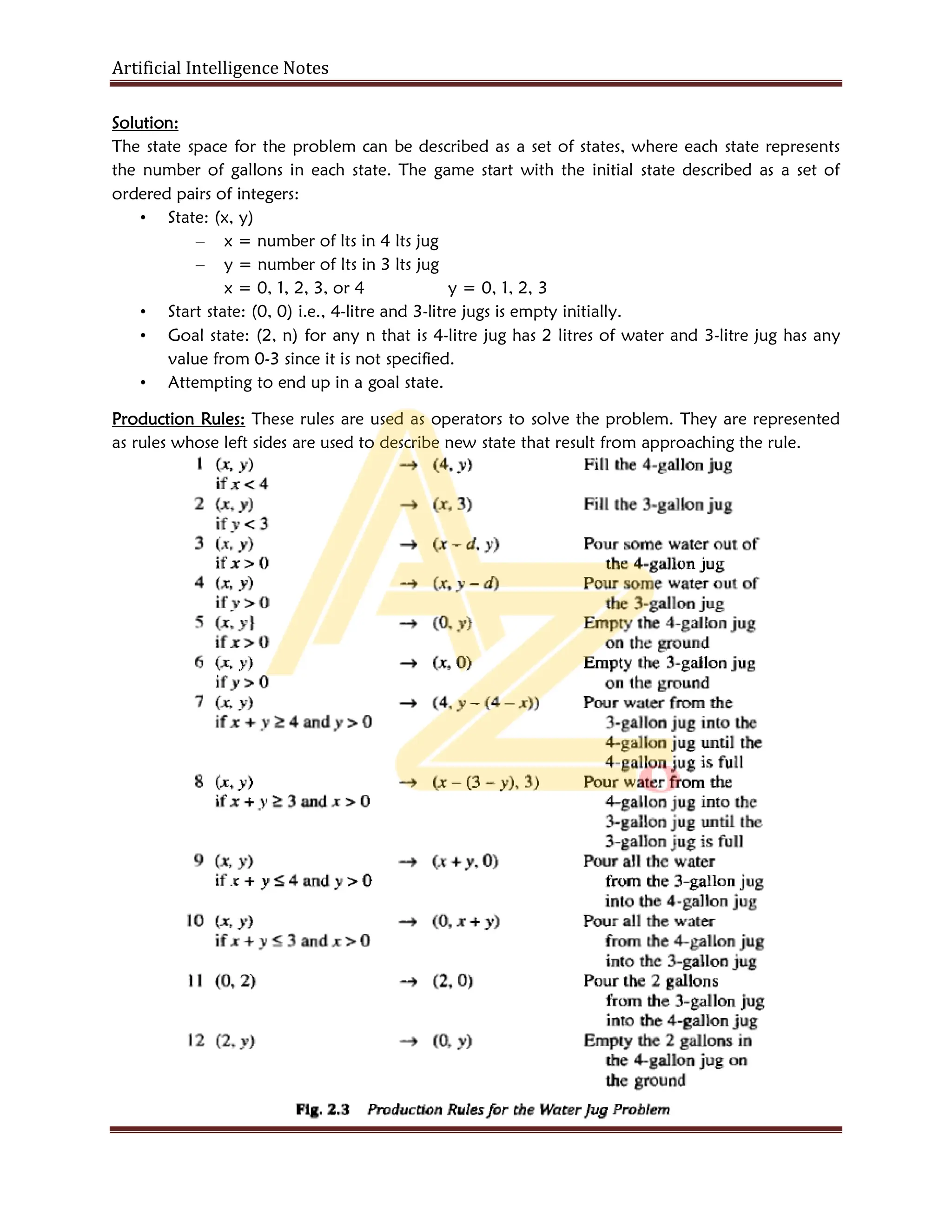
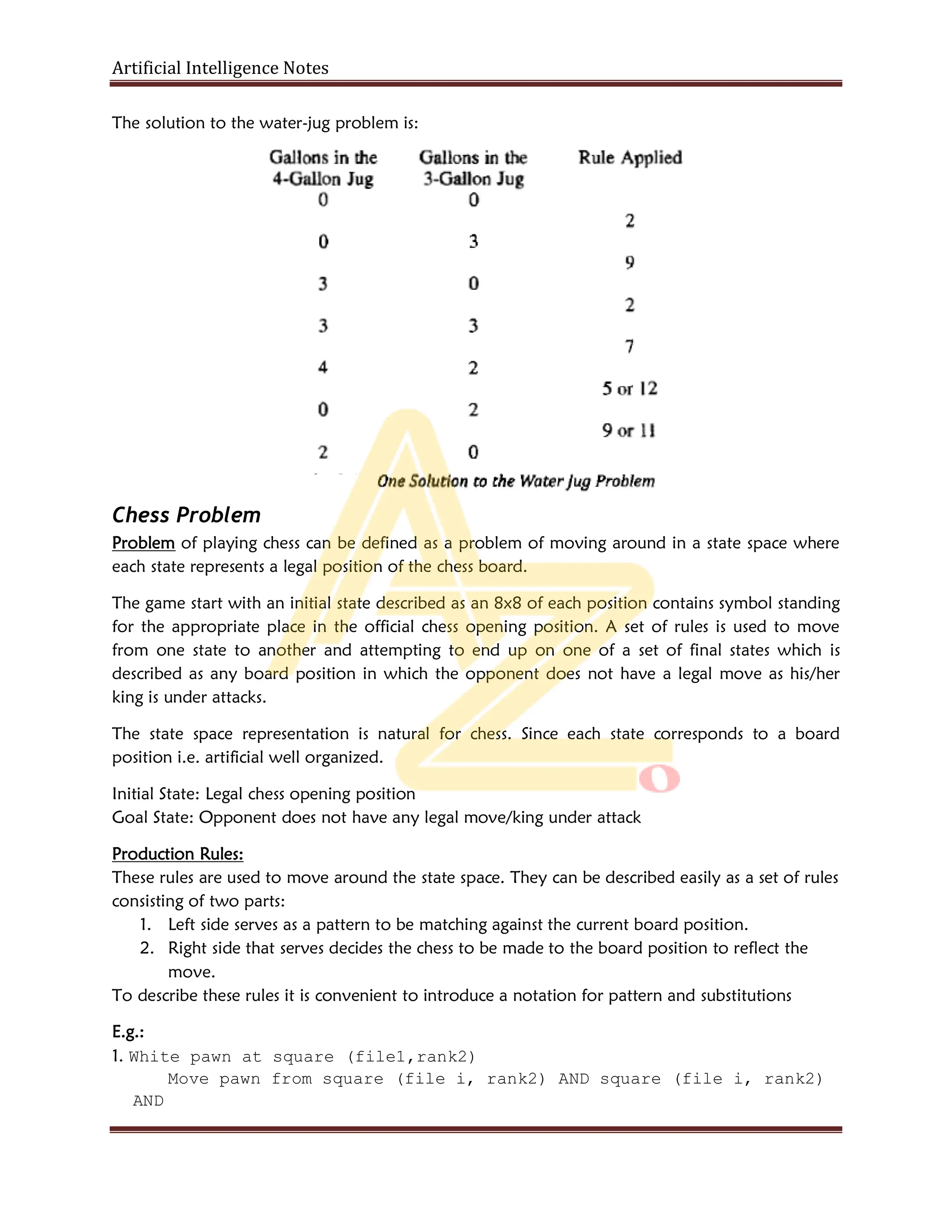
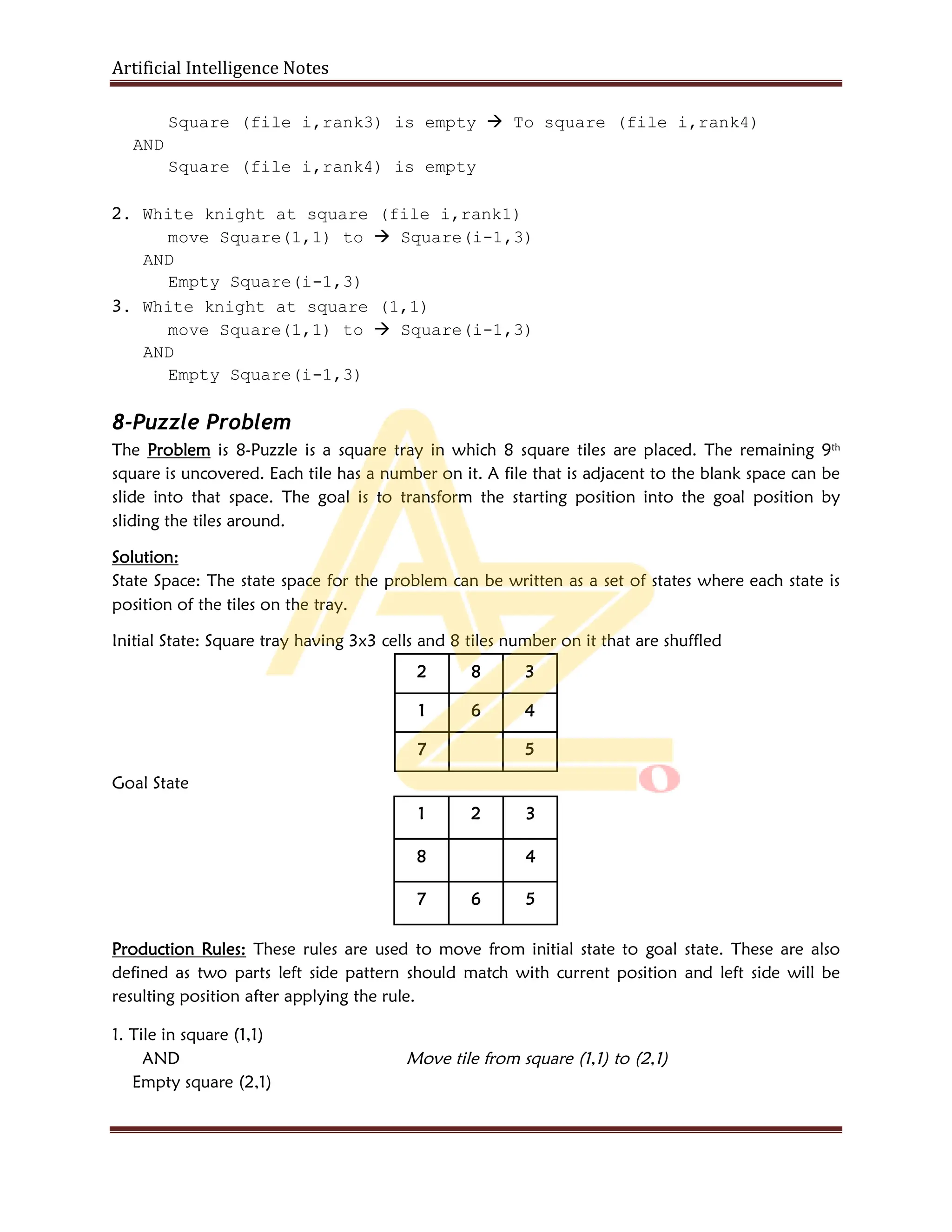
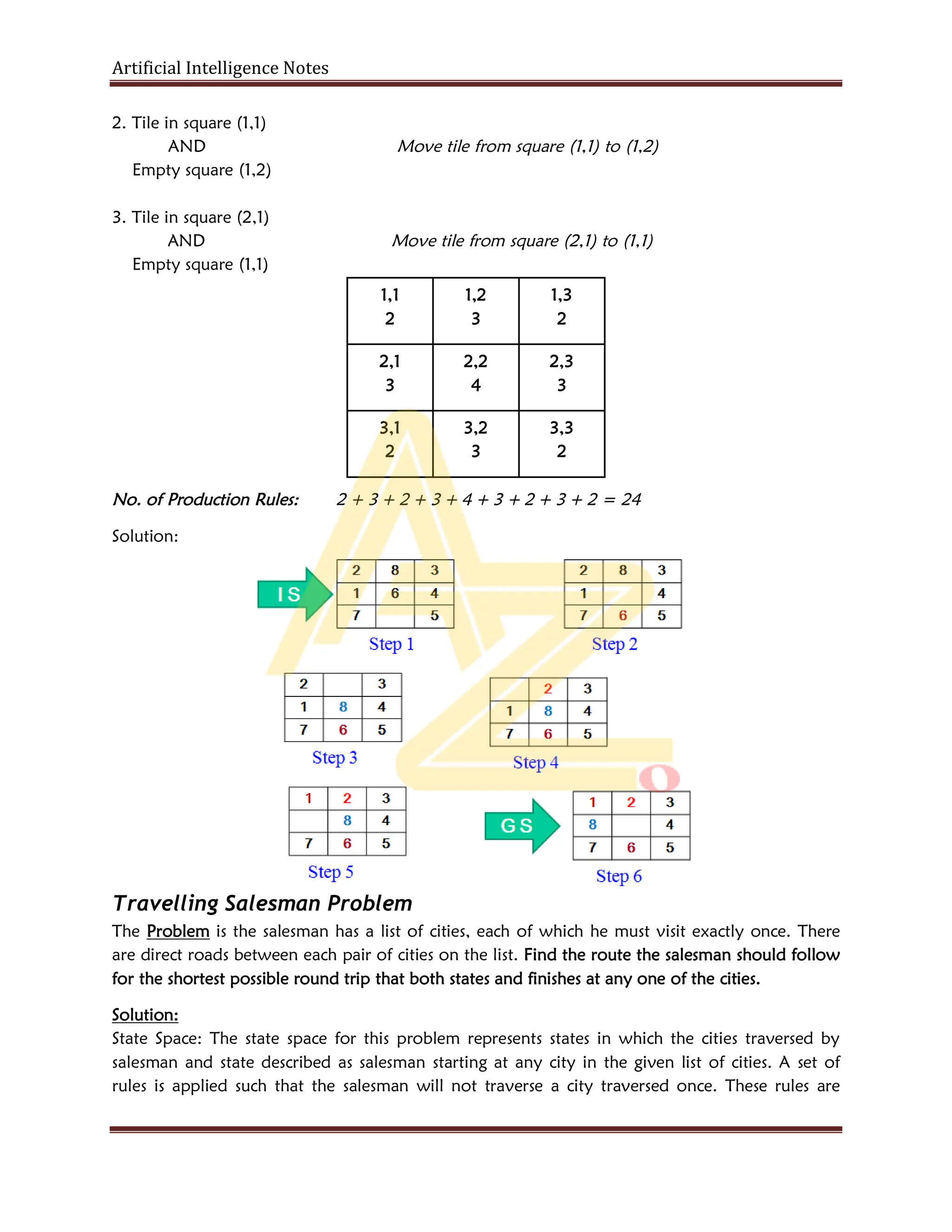
![Artificial Intelligence Notes
resulted to be states with the salesman will complex the round trip and return to his starting
position.
Initial State
Salesman starting at any arbitrary city in the given list of cities
Goal State
Visiting all cities once and only and reaching his starting state
Production rules:
These rules are used as operators to move from one state to another. Since there is a path
between any pair of cities in the city list, we write the production rules for this problem as
• Visited(city[i]) AND Not Visited(city[j])
– Traverse(city[i],city[j])
• Visited(city[i],city[j]) AND Not Visited(city[k])
– Traverse(city[j],city[k])
• Visited(city[j],city[i]) AND Not Visited(city[k])
– Traverse(city[i],city[k])
• Visited(city[i],city[j],city[k]) AND Not Visited(Nil)
– Traverse(city[k],city[i])
Towers of Hanoi Problem
Problem is the state space for the problem can be described as each state representing position of
the disk on each pole the position can be treated as a stack the length of the stack will be equal
to maximum number of disks each post can handle. The initial state of the problem will be any
one of the posts will the certain the number of disks and the other two will be empty.
Initial State:
Full(T1) | Empty(T2) | Empty(T3)
Goal State:
Empty(T1) | Full(T2) | Empty (T3)
Production Rules:
These are rules used to reach the Goal State. These rules use the following operations:
POP(x) Remove top element x from the stack and update top
PUSH(x,y) Push an element x into the stack and update top. [Push an element x on to
the y]
Now to solve the problem the production rules can be described as follows:
1. Top(T1)<Top(T2) PUSH(POP(T1),T2)
2. Top(T2)<Top(T1) PUSH(POP(T2),T1)
3. Top(T1)<Top(T3) PUSH(POP(T1),T3)
4. Top(T3)<Top(T1) PUSH(POP(T3),T1)
5. Top(T2)<Top(T3) PUSH(POP(T2),T3)
6. Top(T3)<Top(T2) PUSH(POP(T3),T2)
7. Empty(T1) PUSH(POP(T2),T1)](https://image.slidesharecdn.com/aimod1azdocuments-240201111237-1010218e/75/AI-Mod1-AzDOCUMENTS-in-pdf-17-2048.jpg)
